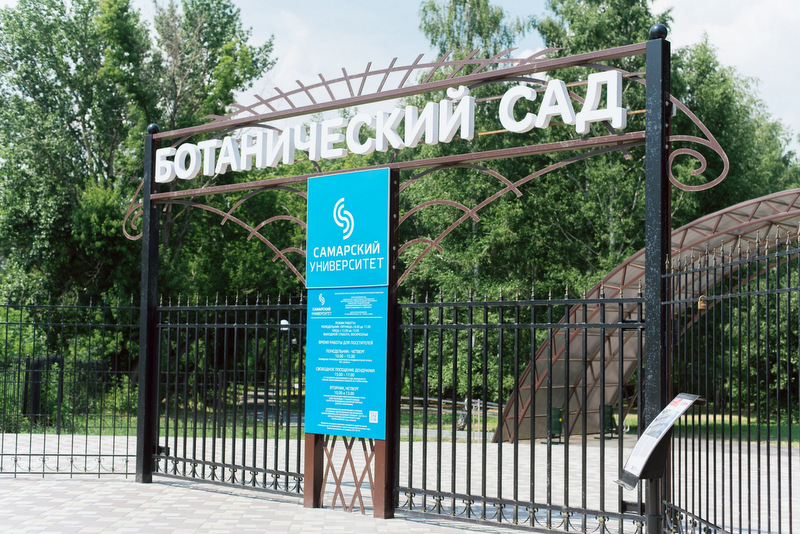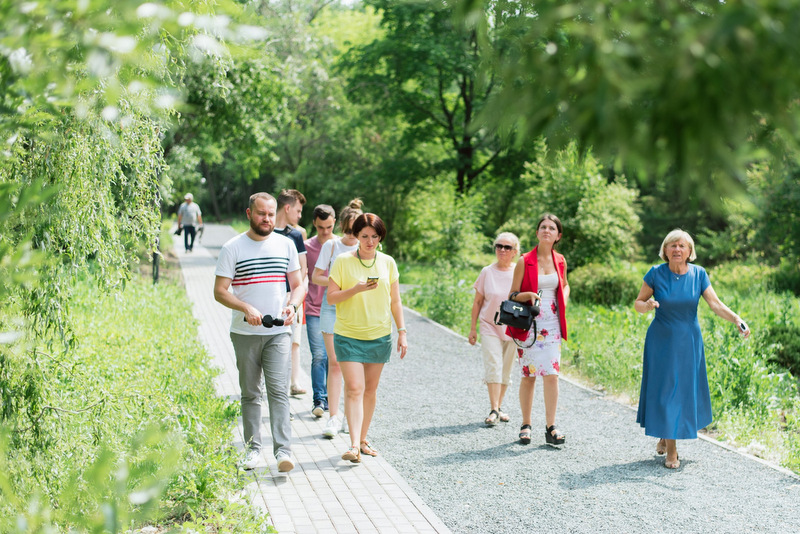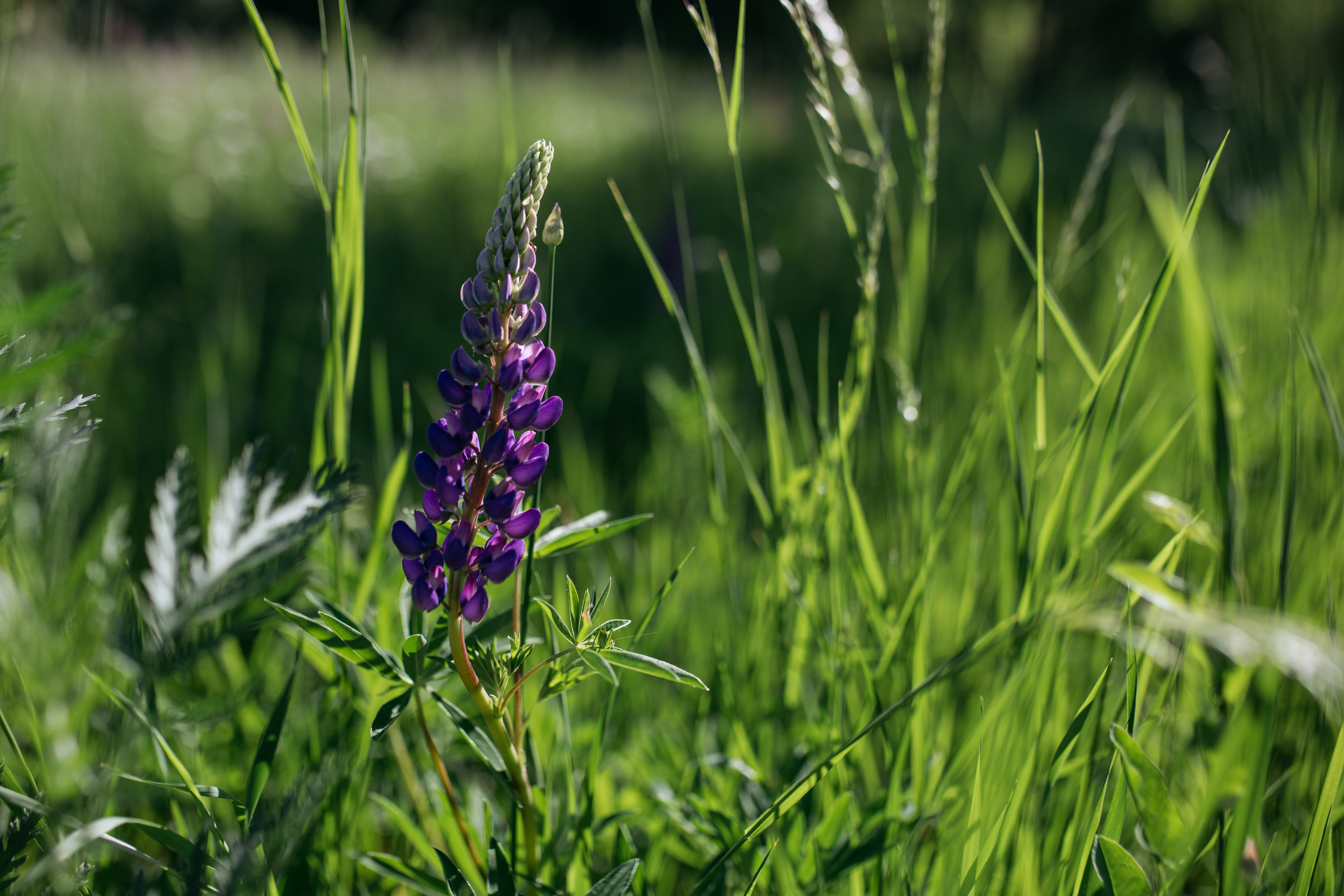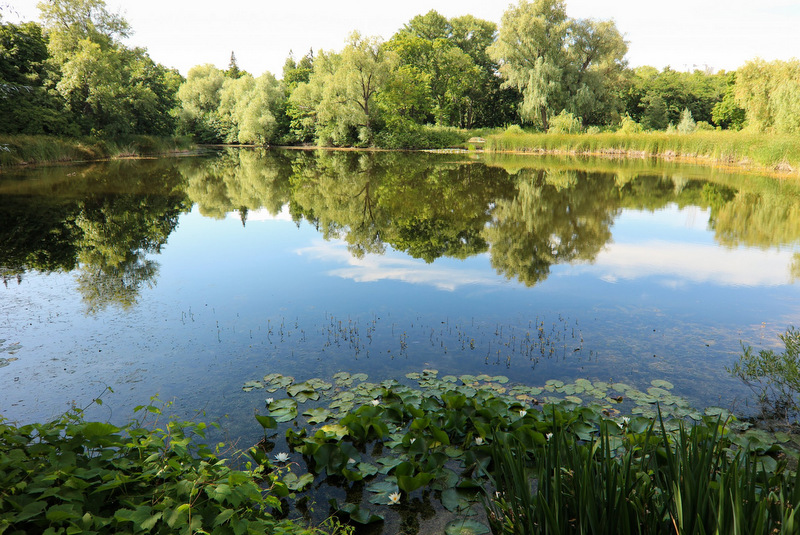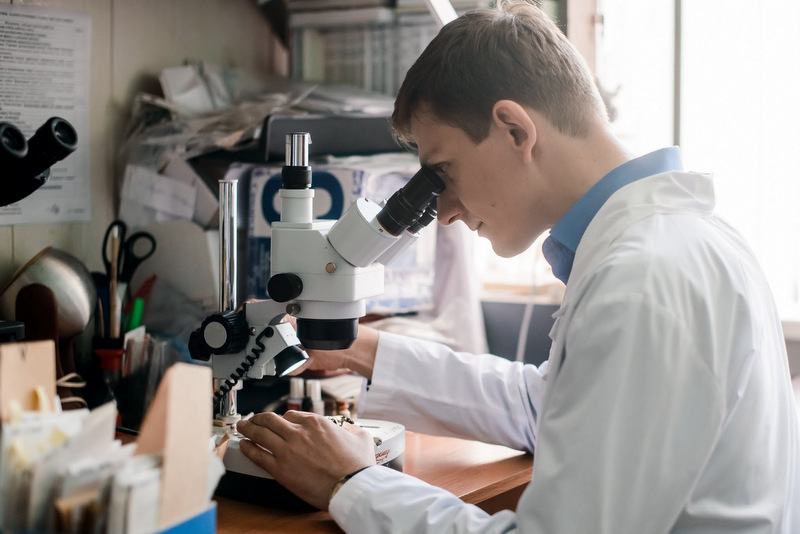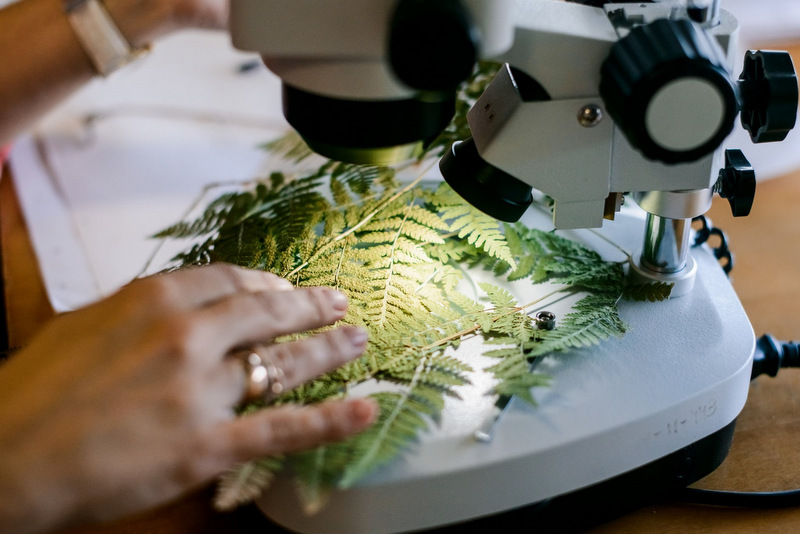Is 91 years old a lot or a little?
The Botanical Garden of Samara University is 91 years old. For humans, it’s quite a lot, the age of a long-liver, for the garden – just the beginning of blossoming!
In Europe, the first botanical gardens were created in the 13th century next to universities and monasteries, for solving purely applied problems, as a rule, of scientific, research and medical nature. In Russia, the oldest botanical garden was founded by Peter I, in 1706, in Moscow, for cultivation of medicinal plants. Now it is 317 years old, it belongs to Lomonosov Moscow State University, and is known as the Apothecary’s Garden.
The Botanical Garden of Samara University treats, first of all, souls of its numerous visitors, but is still intended for science. It is not only a green oasis in the geographical center of the megacity, but also the research laboratory of the University in the open air. Research works on biological diversity studies, the return to the wild of plants on the verge of extinction, preservation of the gene pool of rare, red-book and valuable plant species are carefully and diligently conducted here.
You cannot build the area up! Enriching and protecting – you are welcome!
Over its long life, the place that inspires thousands of people has changed more than once. Founded on August 01, 1932, as part of the Research Institute for the Study and Protection of Nature of the Middle Volga Region, on the initiative of its Director Vasily Ivanovich Smirnov and the famous botanist-florist Aleksandr Fedorovich Terekhov, the garden grew territories, received new functionality, solved increasingly complex tasks.
Now its status is the specially protected natural area of regional significance, which not only does not allow the garden territory to be built up: it is impossible to conduct here any activity threatening the ecosystem of a natural object. The main task of the Botanical Garden personnel is to preserve biodiversity and continuously enrich the flora of this unique place. And at the same time, to conduct scientific, teaching and educational work.
The first landscaping over the decades
The Garden “face” has not changed for decades. The first large-scale reconstruction of the Botanical Garden was carried out in 1980. Then, in 2016, due to the funds allocated in the framework of the “Project 5–100” and from the regional budget, renovating its territory and landscaping began. The roof of the greenhouse, where the rich collection of tropical and subtropical plants locates, has been overhauled. New pedestrian paths – eco-friendly, covered with gravel, allowing air and water to the roots of plants – were laid. They help get to the unique exhibits of the living collection of the Garden, while minimizing the human impact on plants. The Garden has also been equipped with recreation areas for visitors, which have the names of the planets of the Solar system, benches have been installed. The power supply and lighting system was repaired, the dam on the Lower Pond was strengthened, and the cast-iron fence along the facade was restored. The new entrance group at the intersection of Moskovskoe Shosse Street and Vrubel Street, not far public transport stops, has been arranged. This is how one of the largest university botanical gardens in Russia and the oldest botanical centre in the Middle Volga area met citizens and guests of Samara in 2019.
What the renovation program offers
However, the work carried out is the necessary and long overdue minimum for maintaining order in the Garden. For leveling with the Apothecary’s Garden in Moscow, the Peter Great Botanical Garden in Saint Petersburg, the Kant Botanical Garden in Kaliningrad, larger-scale changes are required. The staff of Samara University worked on the project for a long time, and presented to the public the program of renovation of the Botanical Garden in December 2022. The public discussions were attended by residents of the Housing Complex “Botanical” located nearby the garden, representatives of the Ministry of Forestry, Environmental Protection and Nature Management of the Samara Region and other interested parties.
The concept of developing everyone’s favorite space involves a number of changes intended for more comfortable stay of visitors in the Garden. Closer to the Housing Complex “Botanical”, zoning the territory is planned, for the purpose of allocating the recreational area for children, with playgrounds made of eco-friendly materials to be arranged. Residents, who visit the Garden together with their young children, insist on this innovation. It is planned to integrate these facilities without harm to the ecosystem of the zone.
It is also proposed to create in the same territory a modern ecological and recreational area with the amphitheater and the stage with an open-air canopy, made in the nature style. Close to this location, it is planned to include the splash pad, the exhibition area, benches and flower beds. The amphitheater is going to be used for ecological and educational work, conducting workshops in the comfortable for researchers and visitors environment. This specially created infrastructure for visitors is designed to reduce the recreational pressure on the Botanical Garden. In framework of the project, it is also planned to erect a comfortable gazebo for students’ classes.
The renovation project proposes even such an infrastructure facility as a new bridge,which is going to be constructed instead of the old, with arrangement of convenient descents, ascents, handrails.
The developers would like to include comfortable for visitors viewing platforms equipped with benches on the shore of the Lower Pond. Moreover, it is planned to make a more convenient path to the natural spring, and build a gazebo-canopy next to it. The individual thematic corner “Ponds and Springs of the Botanical Garden” is also planned to be arranged there.
The green areas of the Garden will be changed too: for this, renewal of the lilac garden area is planned, as well as creation of the iris garden area, the garden of liana plants, and the rock garden.
The project provides for new convenient additional paths for people with limited mobility, and new fences. It is also includes additionally placing benches and trash bins, laying eco-paths, arranging new information plates with plant names, their descriptions and QR codes, as well as information stands, with developing a modern website of the Botanical Garden.
Besides, the designers have provided for constructing in the Botanical Garden a new greenhouse with transparent rounded geodesic domes. Such domes make it possible to create all-season favorable conditions for plants and have a comfortable volume for flora with any dimension. A separate dome with the insectarium for butterflies and a dome with the serpentarium are also planned to de arranged in the greenhouse. But this part of the project requires separate studies and preparation of design and estimate documentation.
On the Day of Russian Science, university scientists presented to Governor Dmitry Azarov the project for the Botanical Garden renovation. The head of the region thanked the University for the work done, especially for the concept of changes to have been discussed and agreed with residents of the nearby Housing Complex. “Let’s develop excursion programs to tell more about botany, and the unique plants collected in the Botanical Garden”, Dmitry Azarov suggested.
A year before, on behalf of the Governor, the work hours of the Botanical Garden were adjusted: now it is open to the public not only on weekdays, but also on weekends and holidays, as well as in the evening. According to Vladimir Bogatyrev, Rector of the University, the Governor pays great attention to developing the Botanical Garden, and provides comprehensive support in implementation of the University projects.
What is planned as part of the Botanical Garden renovation
- greenhouse repair (replacement of windows, the roof repair, the boiler room repair, climate control arrangement);
- arranging the ecological and recreational area, with the amphitheater, the stage, the splash pad, the exhibition area;
- laying additional pedestrian paths;
- arranging recreation areas in the form of planets, with thematic stands, gazebos, benches;
- creating eco-paths;
- equipping the natural spring and creating the thematic corner “Ponds and Springs of the Botanical Garden”;
- constructing a new bridge with handrails,
- the lilac garden area renewal;
- creating the iris garden;
- creating the garden of liana plants;
- creating the rock garden;
- arranging viewing platforms on the Lower Pond;
- children’s playground made of eco-friendly materials;
- additional fencing along the paths, including fencing around plots of the scientific zone;
- information signs with QR codes, information stands;
- stalls at the entrance for selling souvenirs, seeds, seedlings, ikebanas, booklets.
 Vladimir Bogatyrev, Rector of Samara University:
Vladimir Bogatyrev, Rector of Samara University:“Renovation of the Botanical Garden is a necessary condition for its development. Realizing this, the University worked out the concept of landscaping, and prepared the estimate. The plans include development of not only the infrastructure, but also educational programs for visitors to the Garden. The amount of funds required for the project to be implemented is 84 million rubles. We have been looking for a source of funding”.
“The Botanical Garden renovation is necessary. Five years have passed since the last landscaping of the territory: these were years of active visits to the Botanical Garden by residents. We see that squares and parks are being proactively landscaped in Samara, and citizens want everything to be beautiful and well-maintained in the Botanical Garden, as well. In the Garden Administration’s opinion, in framework of the renovation, the greenhouse needs to be repaired first of all (replacement of windows, the roof repair, the boiler room repair, climate control arrangement). Without urgently implementing these works, our invaluable collection of tropical and subtropical plants, which is 1,300 taxa, may suffer. In the Garden territory, the paths with decorative fences along them need to be repaired; these actions will allow preserving collections of open-ground plants (over 4,500 taxa), as well as biological diversity of plants as a whole in the culture conditions. It is also required to equip viewing platforms on the shore of the Lower Pond: this will provide access to the shores, without destroying coastal and aquatic vegetation. The spring in the ravine also requires to be equipped: it needs building a canopy and a platform at the spring itself, as well as strengthening the streambed. It is necessary to continue improving the entrance group in Moskovskoe Shosse Street, and build the additional entrance in Michurin Street. The modern irrigation system covering all the collection thematic expositions of the Botanical Garden is also needed”.
 Olga Kalashnikova, Director of ANPO “Ecological Centre of the Volga Region”, Candidate of Biological Sciences:
Olga Kalashnikova, Director of ANPO “Ecological Centre of the Volga Region”, Candidate of Biological Sciences:“In the Botanical Garden, collections of local and introduced flora are replenished annually, with reintroduction works to be successfully carried out. But for our visitors’ comfort in the Garden, it is necessary to create new multi-functional locations and spaces for educational, cognitive, recreational purposes. The Botanical Garden renovation project reflects all these nuances, including creation of eco-paths, viewing platforms on the pond, equipping the spring, the children’s eco-playground with splashing pads, the lilac garden area, and much more.
Of course, current repairs are periodically carried out in the Garden, but this, unfortunately, is only to maintain its functioning, with no development! In 2022, the Botanical Garden crossed the 90-year mark. This is a significant date for the region. Few scientific institutions have continued to develop for so many years”.
 Ekaterina Bystrova, postgraduate student of the Department of Ecology, Botany and Nature Preservation of Samara University:
Ekaterina Bystrova, postgraduate student of the Department of Ecology, Botany and Nature Preservation of Samara University:“The Botanical Garden is primarily a scientific area of the University intended for researching biodiversity, restoring and preserving the gene pool of rare, red-book and valuable plant species. Therefore, it is extremely important to carefully treat and preserve this unique facility and the most valuable collection fund. The new greenhouse will create conditions for extending the Botanical Garden collection fund, providing new opportunities for environmental education and promoting world plant diversity. And development of informational materials, formation of the modern website, certainly have positive consequences for improving the media environment of the Garden. However, new infrastructure elements, such as playgrounds, the amphitheater, the stage, should be integrated very carefully. The Botanical Garden should be developed on the principles of sustainability and careful treatment of natural resources. When planning and implementing projects, we should take into account and provide for potential negative consequences of anthropogenic impact.
Researching on the basis of the Botanical Garden
Seed Bank
The University has established the Research Laboratory “Innovative Methods of Studying and Preserving Biological Diversity”, which is engaged in development of the genetic seed bank of rare and valuable plant species for the region and the country. The seed fund is formed from plants included in the living collections of the Botanical Garden. Teachers and students annually replenish the bank by collecting seeds in course of field expeditions to the places, where rare plants grow in wild nature. Seeds from the banks can be used to restore populations disappearing in wild nature. It is important that the Laboratory’s instrument base allows botanists to take their work on preserving rare plants to a new level. Applying the X-ray unit designed by physicists for studying seeds of agricultural crops, it is possible to detect in seconds empty, damaged, underdeveloped seeds. The Laboratory also plans to check quality of the seed material, together with farmers of the region.
New varieties of fruit plants
In course of their selection work, the University scientists have created two new varieties of walnut with unique qualities: they withstand unfavorable weather conditions of the Middle Volga Region (rapid transition from cold winter to rather hot summer, frosts, droughts, moisture deficiency). The nut shell is so fragile that you need neither hammer nor tongs for chopping, because it is enough to simply squeeze the walnut in your hand, for getting its kernel. The varieties were named “Samarets” and “Volzhanin”. The scientists are going to patent both of these varieties, patent applications having already been filed.
Cosmonaut Plants
The University scientists plan to send a batch of seeds of rare plants into space. These seeds were obtained from the plants grown in the Botanical Garden from the seeds that had previously been in orbit with the Bion-M spacecraft. The experiment is purposed for evaluating the possible influence of space flight factors on plant development, which may repeat in generations. This should also help understand whether it is possible to create the reserve storage for seeds of terrestrial plants in space, the orbital seed bank, in case of a cataclysm on the Earth. The experiment will involve, for example, seeds of Dianthus Andrzejowskianus, Linum perenne, Pulsatilla patens, Iris pumila – all these are perennial herbaceous plants to be found in the Samara Region.
Source: firstsamara.ru
 RU
RU  EN
EN  CN
CN  ES
ES 
